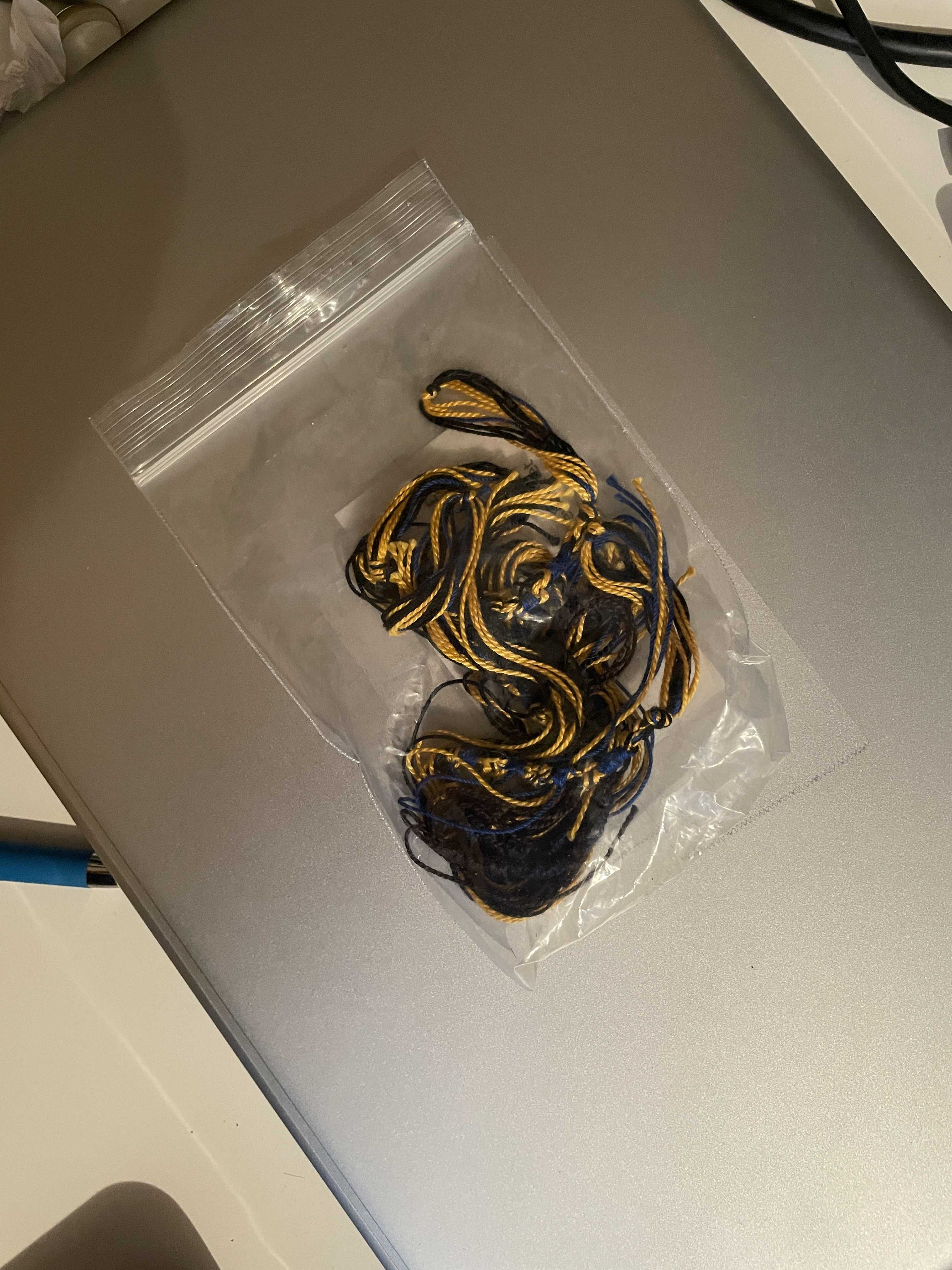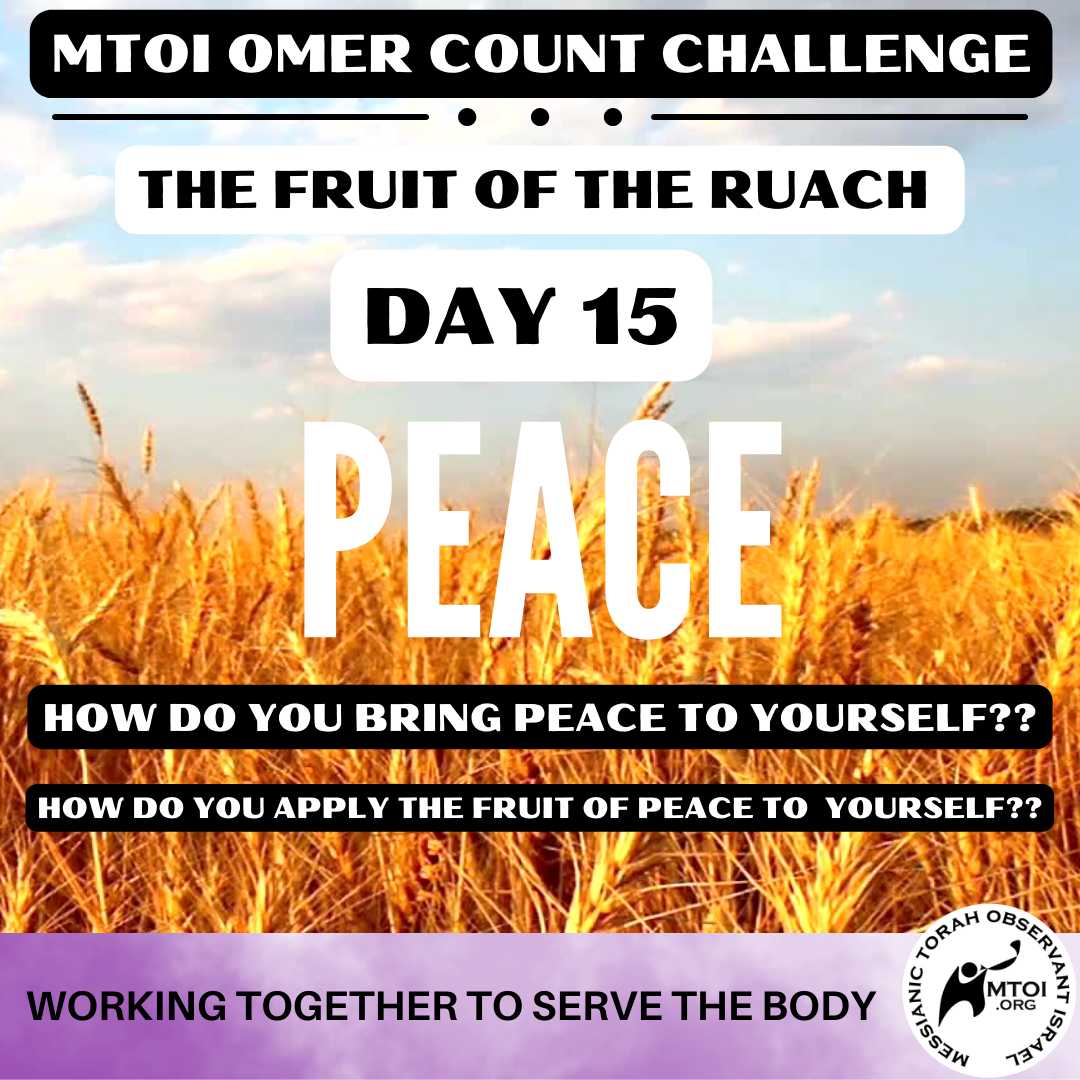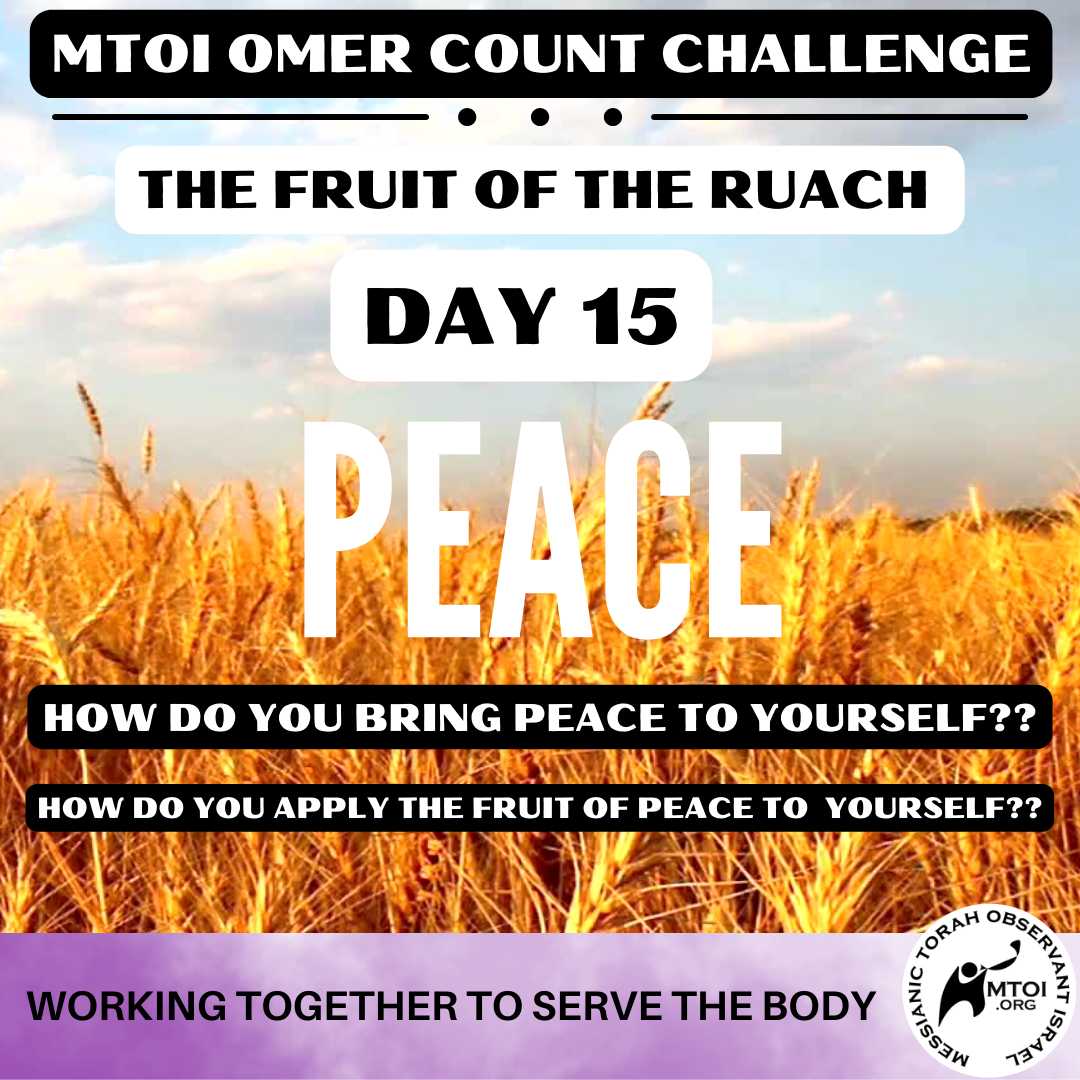Watch
Events
Articles
Market
More
Busted out new set of tzit-tziyot!
And a woman who had suffered a chronic flow of blood for twelve years, and could not be healed by anyone, came up behind Him and touched the fringe of His cloak, and immediately her bleeding stopped.
Luke 8:43-44 - https://www.biblegateway.com/passage?search=Luke 8:43-44&version=NASB




#kedoshim (Leviticus 19-20) concerns maintaining divinely instituted boundaries. All of the rules in this passage have to do with keeping distinct the things that God designed to be distinct. Don't confuse one thing with another. Don't put one thing in the place of another thing or make it appear to be so.
In other words: holiness.



https://www.torahfamilyliving.....com/2022/05/01/yhvh-






Day 15 Challenge
Time to do introspection and search the Scriptures... How do you apply the Fruit of peace/shalom to Yourself?
Search the scriptures and apply them!!
.
.
.
#countingtheomer #fruitofthespirit #peace #shalom #torah #yahweh #yeshua #elohim #messiah #messianic #torahobservant #mtoiworldwide #clevelandtn #mishpocha




Day 15 Challenge
Time to do introspection and search the Scriptures... How do you apply the Fruit of peace/shalom to Yourself?
Search the scriptures and apply them!!
.
.
.
#countingtheomer #fruitofthespirit #peace #shalom #torah #yahweh #yeshua #elohim #messiah #messianic #torahobservant #mtoiworldwide #clevelandtn #mishpocha




Here are some New Testament passages I recommend studying with #torah portion #kedoshim (#leviticus 19-20), along with links to related commentary and videos.
#biblestudy
https://www.americantorah.com/....2022/03/23/parsha-ke



Psalm 17 is known as a prayer of David, he pours out his plea and his praise. Then he summarizes in verse 15, “As for me, I will behold Your face in righteousness; when I awake, I will be satisfied in Your presence.” David gives us insight into resurrection after we pass from this earth. A simple statement when I wake up from sleeping in the earth, I will be in Your presence and I will be content. The message the disciples took to the world was nothing new, but they delivered this message of hope with a renewed spirit. Even from their lives of oppression, living in an occupied land, they delivered the promise of our Creator to a world that was (and still is) desperate for hope.


